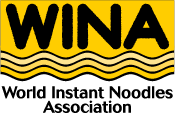NEW
2023.04.27

―WINA Instant Noodles Column―
Nutritional Balance Is the Key to Food Safety
The previous column article explained the relationship between food safety and risk, but in the first place, how many people actually pass away each year due to food? In Japan, it is reported that several persons die each year from food poisoning due to pathogenic bacteria contamination and natural toxins (such as puffer fish, mushrooms, and home garden plants). At several hundreds of thousands, way more people die each year from lifestyle-related diseases such as cancer as well as cerebral and cardiovascular diseases.1) Of course, there is also impact from exercise, sleep, regular health examinations, and other factors, but the main cause of lifestyle-related diseases is food. In particular, when thinking about the issue of nutritional balance, food composition poses the greatest health risk, and experts also advocate that therein lies the key to preventing lifestyle-related diseases and extending healthy lifespans.2)
However, it is not easy to maintain a well-balanced intake of nutrients in our daily diets. There is no problem if we always have a Registered Dietitian providing us with advice, but this is not really possible. It is said that, to prevent lifestyle-related diseases (especially high blood pressure and cancer), the nutrient that we need to pay the most attention to is sodium (salt equivalent). Therefore, instant noodles are often viewed negatively, but if we keep eating strongly flavored meals every day in restaurants, we may not realize that we have exceeded the daily salt intake of 10 grams.
In short, while it is difficult to grasp nutritional content if we solely rely on home cooking and restaurants, for processed food products, if we think of nutrition labeling as our dedicated dietitians, we can set the dietary goal for nutrients that matter to us in terms of our health. Recently, there is also a variety of health-conscious processed food products—such as those with less salt or limits on sugars and fats—being launched in the market that make good use of food additives and functional components with ingenuity in their manufacturing methods, packaging, and such. We can therefore avoid nutritional imbalance to a certain extent by referencing nutrition labeling.
For example, in Japan, the dietary goal for salt intake to prevent lifestyle-related diseases is less than 6.5 grams for women and less than 7.5 grams for men, both ages 18 years and older.3)4)5) The World Health Organization (WHO) recommends salt equivalent below 5 grams, but this is not realistic when taking into account Japan’s food culture today. The dietary goal is therefore set at the midpoint between WHO’s recommendation and the current average intake. In addition, the daily estimated average requirement of sodium is 600 milligrams (salt equivalent of 1.5 grams for both men and women ages 18 years and older).
Regarding sodium, salt is also a required nutrient even though there is no shortage in normal diets. Salt is lost through excessive sweating and bad diarrhea, and an appropriate intake of salt is required in addition to water as a measure against heatstroke. Therefore, we have to understand that salt is a required nutrient, but excessive intake on a daily basis is not good for us.
In this sense, people should learn about food safety as part of consumer education from the time they are children. This will allow them to broadly grasp their own nutritional balance, such as when they are buying processed food products at convenience stores and other places: when they look at salt equivalent on nutrition labeling, they can decide the maximum amount of cup type instant noodles and snacks to consume for the week or think about also buying vegetable salad for proper potassium intake. If risk literacy about food can be improved in this way, it will also help people reduce the risk of lifestyle-related diseases when they become adults.

Note: Standards differ by country and region, so please check those for your own country or region.
《References》
1. Ministry of Health, Labour and Welfare (2022), Summary of Vital Statistics for 2021 (accessed on April 10, 2023, https://www.mhlw.go.jp/toukei/saikin/hw/jinkou/geppo/nengai21/dl/gaikyouR3.pdf) (in Japanese)
2. Ministry of Health, Labour and Welfare (2018), “Feature: Hints for protecting and bettering yourself—Let’s think about our own healthy lifestyles!” in PR magazine “Health, Labour and Welfare” (accessed on April 10, 2023, https://www.mhlw.go.jp/houdou_kouhou/kouhou_shuppan/magazine/2018/03_01.html) (in Japanese)
3. Ministry of Health, Labour and Welfare (2019), Report from the scientific committee of “Dietary Reference Intakes for Japanese (2020)” (accessed on April 10, 2023, https://www.mhlw.go.jp/stf/newpage_08517.html) (in Japanese)
4. The Japanese Society of Hypertension (2014), Guidelines for the Management of Hypertension (JSH 2014) (accessed on April 10, 2023, https://www.jpnsh.jp/data/jsh2014/jsh2014v1_1.pdf) (in Japanese)
5. The Japan Foundation for Aging and Health (2021), “Effects of sodium and its daily intake” on Kenko-Choju Net (accessed on April 10, 2023, https://www.tyojyu.or.jp/net/kenkou-tyoju/eiyouso/mineral-na.html) (in Japanese)
《Author: Takeshi Yamasaki》
Chairman, NPO Society for Science of Food Safety and Security (SFSS) and DVM, Ph.D
Takeshi Yamasaki graduated from the Faculty of Agriculture, The University of Tokyo in 1983 and the university’s graduate school in 1985. He then joined Wakunaga Pharmaceutical Co., Ltd. and worked for six years in the United States on research and development of dietary supplements. In 2011, he established SFSS.
Currently, he also serves as a director at FactCheck Initiative Japan (FIJ), Head of the secretariat of Japan Food Journalists Association (JFJ), as well as head of the secretariat of the Science Committee of the Association to Create a Society with Consumer Citizenship (ASCON).
★SFSS Website (in Japanese) https://nposfss.com/
